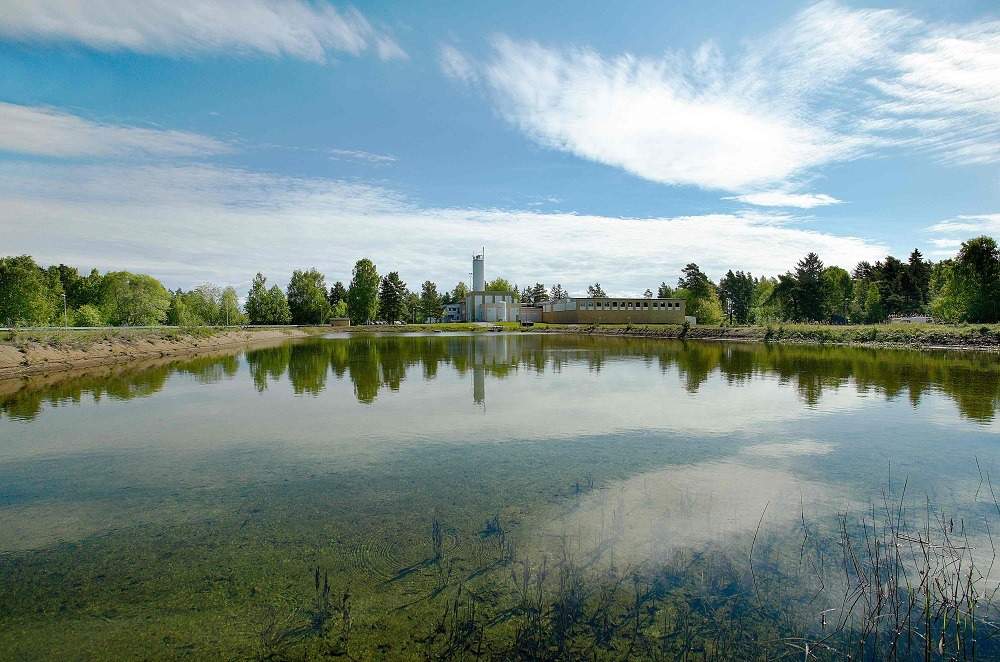
The beautiful lake Mälaren, Sweden’s third-largest freshwater lake, has inspired many a song. The name Mälaren stems from the Old Norse word mælir meaning gravel. Gravel and sand also play a role in water purification, especially sand, which is used by water purification plants to produce high-quality water. Mälaren is a major raw water source, supplying several millions of people with drinking water. It is easy to join the chorus of praise for the beauty of Mälaren.
One of Europe’s cleanest lime products
In addition to sand, lime is also used to produce clean, good water with the right pH value. The energy utility Mälarenergi, located in Västerås, operates a water purification plant in Hässlö, which supplies the residents of Västerås with clean and good drinking water. It uses two lime products: slaked lime and Filtra A VE, a crushed fraction and one of Europe’s cleanest limestone products, which is extracted in Norway.
The use of two lime products at two different stages of the process is a method and an approach developed together with us at Nordkalk. We asked Process Engineer Börje Gestlöf from Mälarenergi to tell us more about the changes they made to the process with the help of Filtra A VE and the benefits they gained.
A combination of sand and lime
“The work began in 2012 with smaller-scale simulations and tests to find out how the various parts of the process could be made to work together optimally,” says Börje, making a point of recognising the contribution of one of Nordkalk’s representatives who had a wealth of knowledge about chemical and process engineering. Börje recounts that what was new about the testing was to explore if the sand in the sand filters could be replaced altogether with some type of clean lime fraction. “We were not fully satisfied with the outcome, so we decided to try out a combination of sand and lime instead,” says Börje, who also clarifies that the test was aimed at finding a good way to start increasing the pH level at an earlier point in the process, already at the purification stage.

pH adjustment earlier in the process
“To start working towards the correct pH balance at an early stage meant, among other things, that the subsequent process steps could be controlled in another, better way. The use of Filtra A VE already in the sand filters enables us to reduce the amount of slaked lime at the end of the chain. We can let the process run for a bit longer, which enhances dissolution and ripening,” Börje explains. According to him, working with Filtra A VE also benefits the process as a whole. Starting to increase the pH level early on also means that the concrete in the plant is affected to a lesser extent than it would be if the pH value were lower and thus the acidity were higher.
Börje is also pleased that Filtra A VE is easy to work with. The sand filters that contain lime are backwashed during the process. That ensures that sand and lime are kept apart from each other at all times. The crushed lime in the sand filters also has the ability to stop the pH process once the correct balance has been achieved, thus eliminating any risk of overdose. The crushed limestone also contains bound carbon dioxide, which is positive for alkalinity. The purification plant in Hässlö features 12 sand filters of 40 cubic metres each, eight of which contain both sand and lime, with eight parts lime to two parts sand.

A positive cost profile
Mälarenergi uses Filtra A VE in its existing facilities, without needing to build any new ones, which, of course, is positive in terms of costs. The empty silo located on the premises is now used as storage for the lime products, which are delivered in big bags. Since the amount of slaked lime could be reduced, the introduction of a new product, Filtra A VE, did not entail any direct additional costs either. But according to Börje, the benefits do not end here.
“We considered a number of factors to get an efficient and easy-to-operate purification process and a good end product. Avoiding any new construction work was a factor. A reliable process and an end product with consistent quality was another. What’s more, the entire process became more environmentally sustainable,” says Börje, summing up the method as reducing overall energy consumption, lowering CO2emissions, improving dissolution and ensuring more consistent, excellent water quality. All this is good news for both consumers and water pipes.
“It is quite simply an efficient and good way to produce high-quality water, and we are extremely pleased with how all the parts of the process work together,” says Börje, who is happy to share his experiences with other water purification plants.
“We are proud and thrilled to be able to offer our customers this highly valued product. We want to help our customers with high quality products and solutions that benefit them – and the environment – in the best possible way. Sustainable business is at the heart of our strategy,” says Solveig Jakobsson, Sales Manager Environment from Nordkalk.
Björn Holmgren